Well, that wasn’t stressful at all!
After dominating the run of play for two periods, the Toronto Maple Leafs decided to make things interesting for fans down the stretch, allowing multiple Grade-A chances in the dying minutes of the game. Thanks to some stellar goaltending from Jack Campbell, they were able to hold on for the 2-1 victory in Game 3.
Carey Price also brought his A-game on Monday night, making a few highlight-reel stops, including a desperation paddle save on Jason Spezza, who was staring at a wide-open net. I’m not sure if it should make you feel better or worse as a Leafs fan knowing that the Canadiens have been getting a few throwback performances from their netminder, but it’s certainly making for an interesting series here.
We’ll touch on some of the other intriguing aspects of this playoff series later in the article, such as the addition of Cole Caufield and lingering Brendan Gallagher injury. There’s a lot of meat to chew on tonight, so let’s start by diving into some of the individual performances.
It’s time for some Leafs Report Cards playoff analysis!
Noteworthy Performances
This section starts and ends with Morgan Rielly. We got to see all 200-feet of what makes him such a unique NHL defenseman. Offensively, he was jumping up into the play along the left wing, using his speed to help his team generate multiple chances off the rush, which is an area we’ve touched on the importance of earlier in these playoffs.
Rielly has a knack for joining Toronto’s attack in transition, putting opponents on their heels and opening up passing lanes for his teammates. Unfortunately, he also has a knack for giving up too much space to opposing forwards when defending the rush, which happened a couple of times against Nick Suzuki in 1-on-1 situations.
You could point to the fact that Justin Holl pinched a bit prematurely here, or the fact that Ilya Mikheyev doesn’t communicate that he has the backdoor pass — you need to talk to your teammates who have their back turned. Regardless, that’s too much room to be giving up defensively and Rielly pays the price for it.
On his next shift, Rielly bounced back with the type of play that’s made him one of the more dangerous offensive defensemen in the league.
Motion like this in the offensive zone is what makes Toronto so difficult to defend. When the Matthews-Marner line shares the ice with Rielly at 5v5, they’ve been able to make plays along the perimeter all season, using constant motion to confuse opposing defenses and open up passing lanes through the middle of the ice.
Tonight, that combo was on the ice for seven of Toronto’s scoring chances and only one against at even strength. For all of his flaws, the pros significantly outweighed the cons for Rielly tonight.
Another combination that dominated in Game 3 was the surprising dynamic duo of Alex Kerfoot and William Nylander. I’ve been highly critical of Kerfoot’s 5v5 play this season, but I have no issue eating crow after watching him control the run of play tonight. He was coming out of 50-50 battles with the puck, using his speed to transition play up the ice, and managed to complete several high-value passes in the offensive zone.
Nylander was Toronto’s best player by far at 5v4, but even at 5v5, his puck-carrying abilities shone through as he was able to weave his way in and out of the neutral zone with possession. He didn’t generate chances from in tight as well as you would’ve liked to see, but that didn’t stop him from finding the back of the net for a third playoff game in a row. He was also winning back loose pucks with a strong stick defensively.
I wasn’t sure how trustworthy a Galchenyuk-Kerfoot-Nylander line would be defensively, but credit where credit’s due, they held their own on that side of the puck. That said, Alex Galchenyuk was a passenger on Monday night, failing to register a single shot attempt (again). He also took a four-minute high-sticking penalty right off the bat and went offside by 30-feet on the following shift.
It was cool to watch Wayne Simmonds have a Playoff Moment, delivering a huge hit on Gallagher in the third period. In addition to his physical presence, Simmonds provided big-time value on the cycle at 5v5, hemming the Canadiens in their own end for long stretches in the second period. He did a great job winning battles along the boards and also managed to generate four chances from the slot, ranking second on the team tonight behind Auston Matthews.
Simmonds’ linemates also looked to be in fine form. Pierre Engvall was playing with more of an edge than we’ve seen all season, using his size to win battles during the run of play and stand up for himself in post-whistle scrums. His long wingspanned brother from another mother (Russia), Ilya Mikheyev, also chipped in with some strong defensive play and penalty killing.
Last but not least, we should probably mention that this post-game analysis wouldn’t be so positive had it not been for Jack Campbell standing on his head in the third period. As we alluded to earlier, the Leafs turtled in the final frame, getting absolutely shelled with respect to shots and scoring chances.
Campbell managed to close the door by reading plays well and staying positionally sound in his crease, although it was this observation from Justin Bourne that resonated most with me.
Jack Campbell’s best attribute this series so far has been catching pucks. Everything that hits him in the upper body dies and the leafs get a whistle rather more D-zone time. I mean he’s been no Carey Price, but hasn’t been asked to be, yet.
— Justin Bourne (@jtbourne) May 25, 2021
Montreal likes to use screens in the offensive zone when they’re firing shots from distance, which is why it’s paramount your goaltender control their rebounds well if you want to have success. Campbell has been able to catch everything in his glove, and more importantly, have pucks stick to his chest like velcro instead of bouncing out into the slot for second and third chances.
Toronto’s Power Play
What Went Wrong?
After what felt like a renaissance in Game 2, it’s back to the drawing board for PP1. There are a lot of problems we could point to on Toronto’s top unit, but the following clip explains a lot.
The Canadiens’ PK is daring Mitch Marner or Joe Thornton to shoot from there, knowing that neither player wants to take that shot. This allows them to overload to Matthews’ side, which really only leaves Toronto with the pass back option to Rasmus Sandin on the point.
There were a few times Sandin had the puck on the blueline and Montreal’s penalty killers sprinted to Matthews on the right side of the ice, leaving Marner wide open since he isn’t a shot threat. The same could be said for Thornton as the bumper in the middle of the ice, which is a dead horse I’ve been beating all season.
The entries were also a problem tonight. In Game 2, Toronto was able to gain the zone with speed and attack right away off the rush. In Game 3, Marner and Matthews were slowly skating the puck through the neutral zone and making little five-foot passes instead of stretching the ice horizontally.
The good news is that PP2 looked great with Nylander running things from the top. The bad news is that the Leafs are wasting one of their most talented players in secondary minutes. This is the third game in a row Nylander has been held under 17 minutes despite being one of the most dangerous players on the ice — for either team. Toronto needs to find a way to get him more ice time.
On the bright side, Nylander got a few looks on PP1 later in the game, although that didn’t appear to magically solve the problem. Aside from gaining the zone, the biggest issue with Toronto’s top unit is how much teams are sagging off of Marner.
The best solution I’ve seen to that problem is the following setup.
Image from Jack Han’s article
With John Tavares injured, you obviously have to go with a different bumper option (please not Thornton), but the idea here is that you have two shot threats on both flanks with Nylander and Matthews. Marner playing along the goal-line would allow him to roll out of the corner as a passer, giving the Leafs more options to “switch” and become less predictable positionally.
Now, I’ve heard some people say that Marner isn’t willing to play down low on the power play. Frankly, if that’s the case, I’d take him off PP1 entirely. Despite his elite passing ability, he’s a player teams can easily gameplan against from the half-wall. If you can get him to some different spots on the ice (behind the net, out of the corner, or even rotating up top to the blueline), he can be extremely valuable as a playmaker.
You can still have an effective PP2 run by Jason Spezza, but the priority should be to get PP1 clicking at an elite rate again. As simple as it sounds, I think you accomplish that by getting more skill and scoring talent on the ice.
Montreal’s Power Play
On the other side of the equation, I found Montreal’s 5v4 setup to be quite interesting. Let’s start by breaking down everyone’s favourite 5’7 sniper, Mr. Caufield.
He’s so good at roaming around in the offensive zone, finding the soft spots in the defense where he can get his quick shot off.
The Habs tried a few different looks with Caufield. There were times he was on his off-wing in the Ovechkin spot for the one-timer. Other times, he would set up on his strong side, looking for the quick catch-and-release wrister we’ve seen Matthews pull off so frequently, albeit from a right-handed shooter on the right side of the ice.
It’ll be important for Toronto’s penalty killers to know where #22 is at all times, since he has a tendency to ad-lib during the run of play to get himself open. He’s by far Montreal’s biggest shot threat with the man advantage, which is why I can’t believe it took until Game 3 to get him in the lineup.
Another thing to keep an eye on is the following setup on Montreal’s other power-play unit.
This was off of a 5v4 faceoff win, so you know it’s by design. That’s Shea Weber in the Ovechkin spot, with Tyler Toffoli running the point.
They eventually switched back to where you’d expect them — Toffoli on the wall and Weber at the blueline — but the fact that they tried switching things up is intriguing to me. We’ve seen Washington switch John Carlson and Alex Ovechkin before, which has caused massive confusion for opposing PKs in the past.
Is this just a one-off or a sign of things to come? I can honestly say I have no idea, but I’m very curious to see if it’s something Montreal pulls out of their bag of tricks in Game 4.
Line-Matching
Dominique Ducharme went with some… interesting lines to start Game 3.
Lehkonen-Danault-Anderson
Armia-Suzuki-Caufield
Toffoli-Kotkaniemi-Gallagher
Tatar-Byron-Perry
With last change on the road, I can understand the desire to have more balance in your lineup. Then again, the fact that Tomas Tatar was almost a healthy scratch coming into this game shouldn’t exactly inspire confidence from Habs fans in Ducharme’s ability to evaluate the forwards on this Habs roster.
The one matchup Montreal clearly wanted was their Phillip Danault line and Chiarot-Weber pairing against Matthews & Co. That didn’t work out so well for them in Game 3, with Toronto’s top dogs out-chancing them 10-5 at even strength. In the few minutes Paul Byron took on the matchup line after Arturri Lehkonen left the game early, the scoring chances were 8-1 Toronto.
Gallagher not playing on that top line — and not playing much at all throughout this game — suggests the injury is still bothering Montreal’s best 5v5 forward. That’s a major problem for the Canadiens, especially considering Chiarot keeps getting burned off the rush in matchup minutes.
It’s cool to bully your opponents after the whistle, but at some point, you have to ask yourself why Montreal is willingly sitting their best puck-mover, instead opting to have their brutes get hemmed in by Toronto’s top talent at 5v5.
Let’s pull up some of Corey Sznajder’s manual tracking from this season to help illustrate that point.
 Considering this is the same team that waived Victor Mete earlier in the year, I guess we shouldn’t be too surprised.
Considering this is the same team that waived Victor Mete earlier in the year, I guess we shouldn’t be too surprised.
I can’t help but be reminded of the time Washington chose to play Karl Alzner over Nate Schmidt to start their 2017 playoff series against Toronto. An Alzner injury eventually forced them into the right decision, with Schmidt’s elite puck-moving ability completely changing the dynamic of that series.
Something tells me Habs fans won’t be so lucky this year, but I’ve been wrong many times before.
Stats of the Night
Scoring chances at 5v5 tend to be a pretty good indicator of which team played the best. It’s also a great predictor of future performance, so let’s take a look at how things played out by period in Game 3.
- 1st Period: 8-4 Leafs
- 2nd Period: 12-9 Leafs
- 3rd Period: 8-1 Canadiens
That sums up this game pretty well. The Leafs played a strong possession game for 40 minutes, getting themselves lots of zone time and opportunities off the cycle. Then they completely turtled for 20 minutes, asking a lot from their goaltender.
To help break down some of the individual performances, here’s a look at some of my favourite metrics courtesy of Natural Stat Trick.
Things to consider
The player at the bottom of that list is someone I thought about bringing up earlier. Riley Nash has one purpose on a hockey rink: to prevent scoring chances (for both teams). In Game 1, the Leafs only generated one, but only allowed one the other way. Tonight? One for, two against.
That’s more or less what it says on the label. Nash is what he is: a low-event player. That said, I could see the Leafs taking him out of the lineup in favour of Adam Brooks to reunite the Thornton-Brooks-Spezza fourth line. It was a successful combination in the regular season and could provide Toronto with some much-needed scoring depth, especially considering how little Galchenyuk has been providing lately.
Last but not least, really keep an eye on Montreal’s roster decisions moving forward. The Tatar-Danault-Gallagher line has controlled 5v5 play at an elite rate for multiple years now, but Ducharme’s bizarre handling of Tatar and Gallagher have made me wonder how much their health has impacted their usage as of late. Will he pull out the lineup blender again in Game 4 or revert back to lines that have had success in the past?
I can’t answer that question with much confidence, although I will say this when it comes to Game 4 lineup decisions: I’d be shocked if we don’t see Jack Campbell in net again on Tuesday night.





















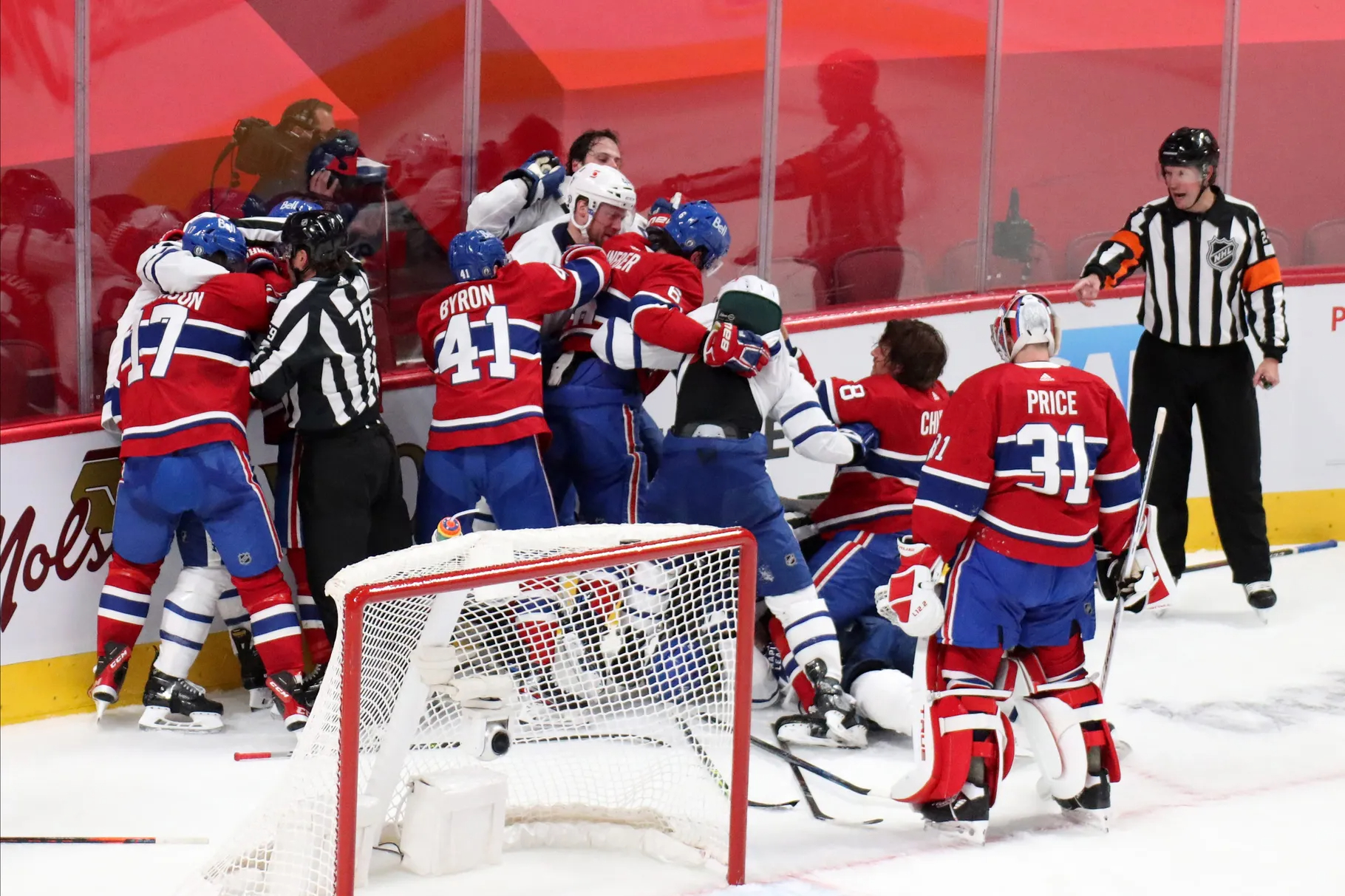
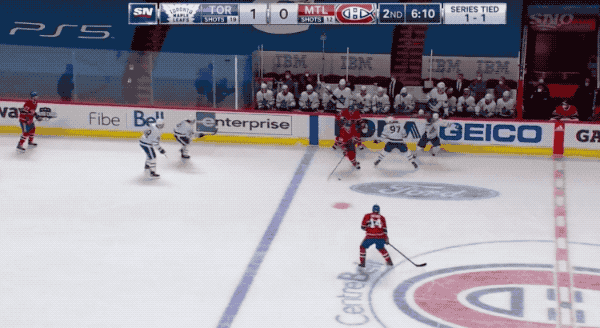

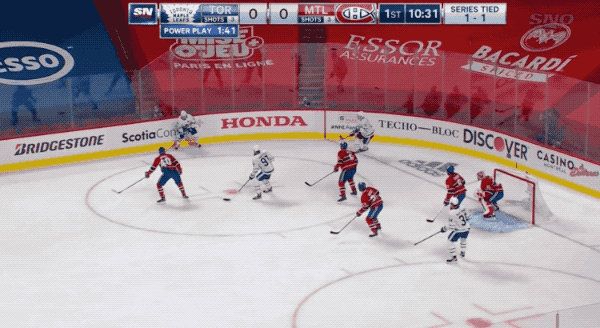
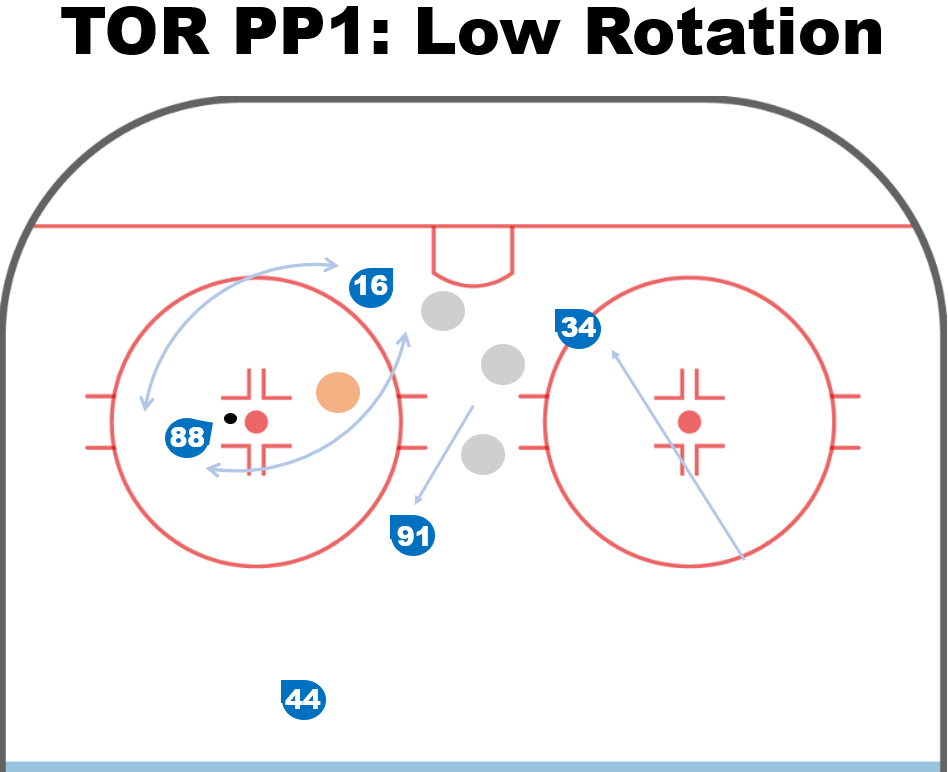
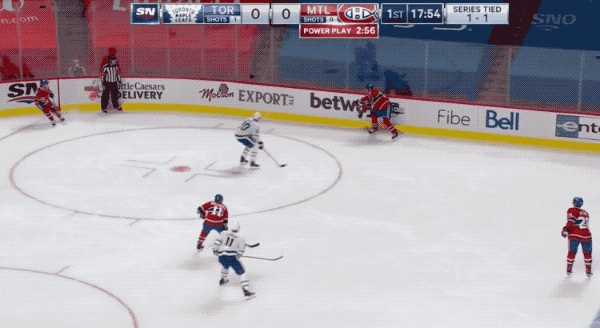
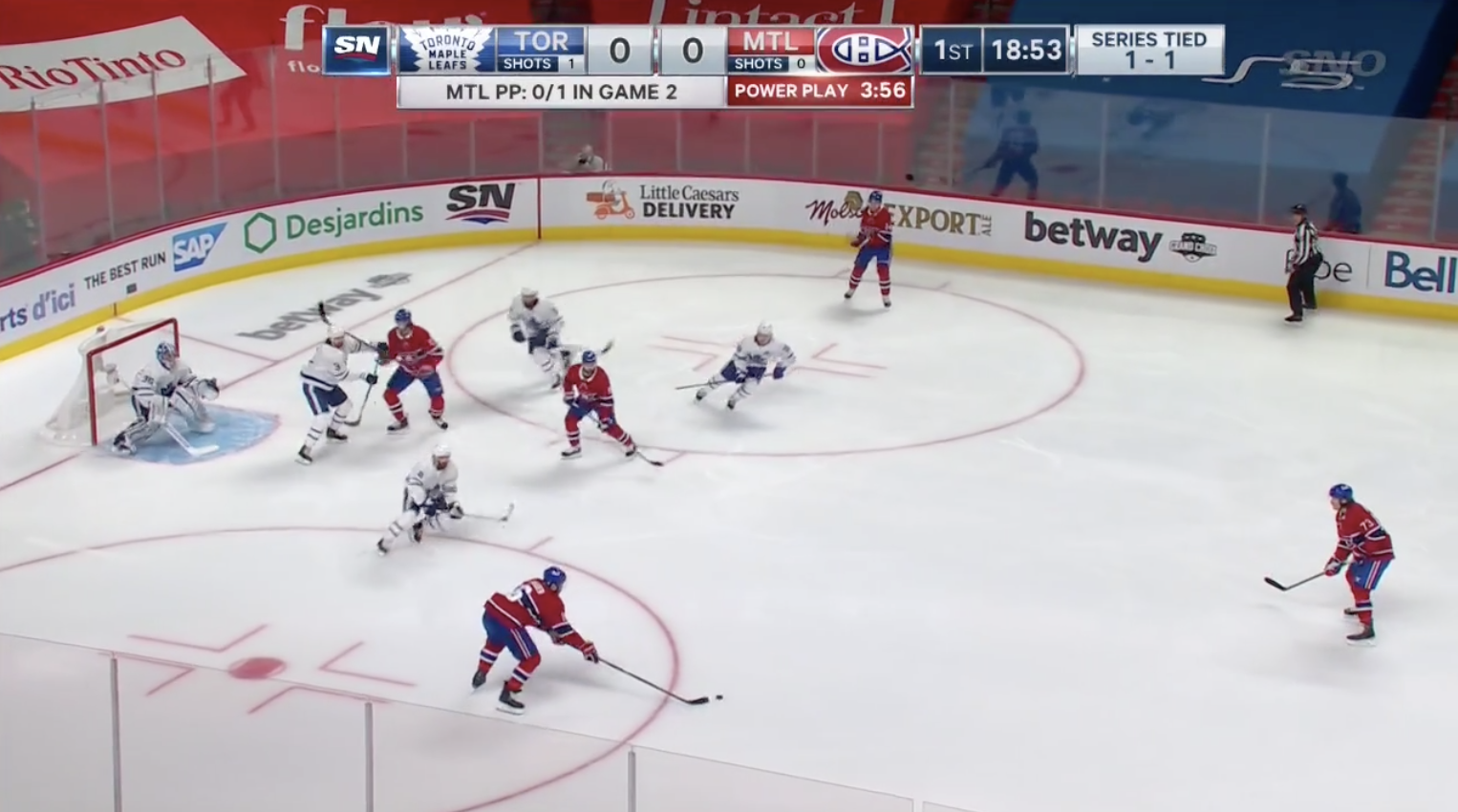
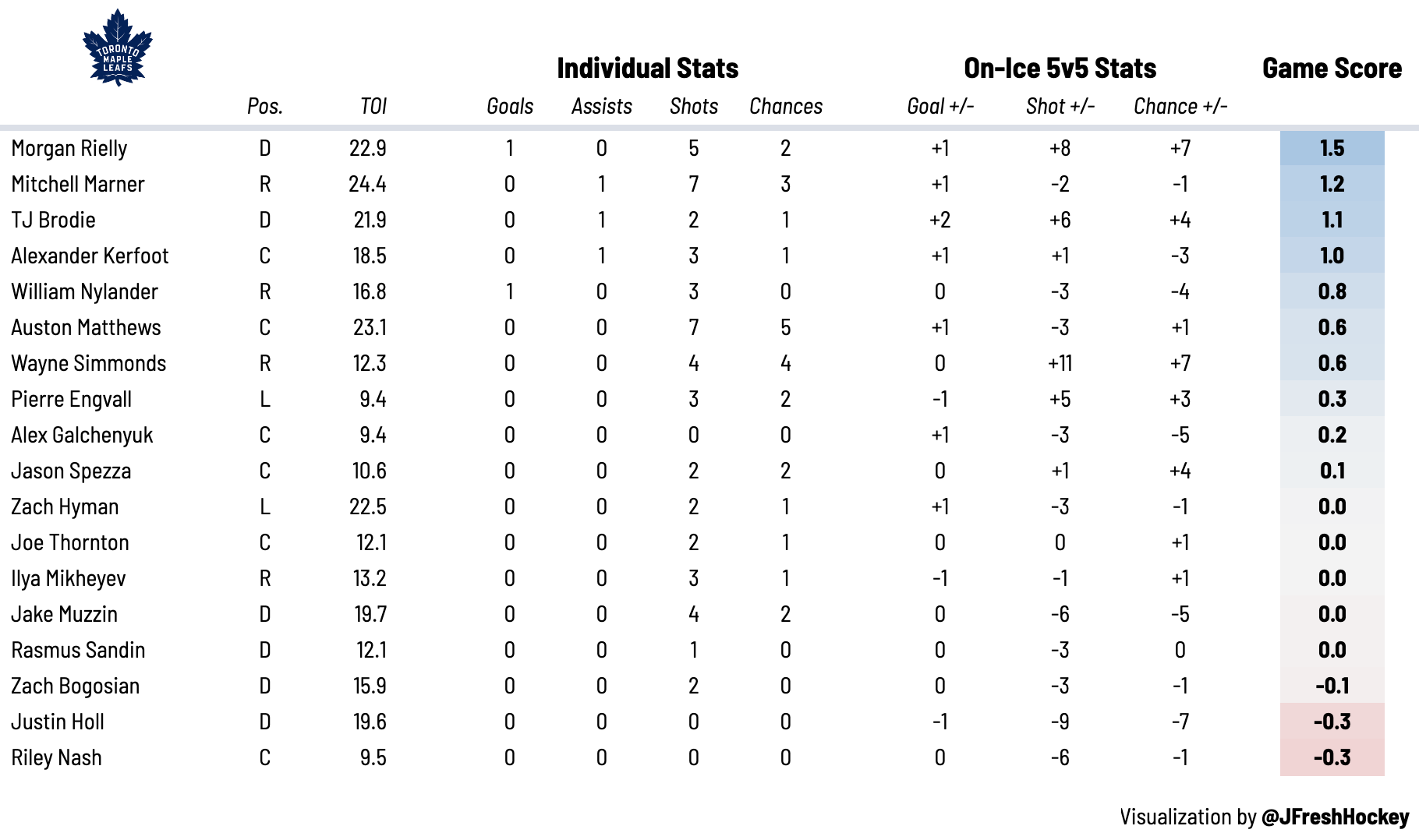








![New Leaf Anthony Stolarz on the opportunity in Toronto: “In Florida, I knew my role as a backup… Now, [Joseph Woll] and I are competing for starts… As a goalie, that’s all you can ask for” Anthony Stolarz, Stanley Cup win, now Maple Leaf](https://mapleleafshotstove.com/wp-content/uploads/2024/07/anthony-stolarz-sc-100x70.jpg)
